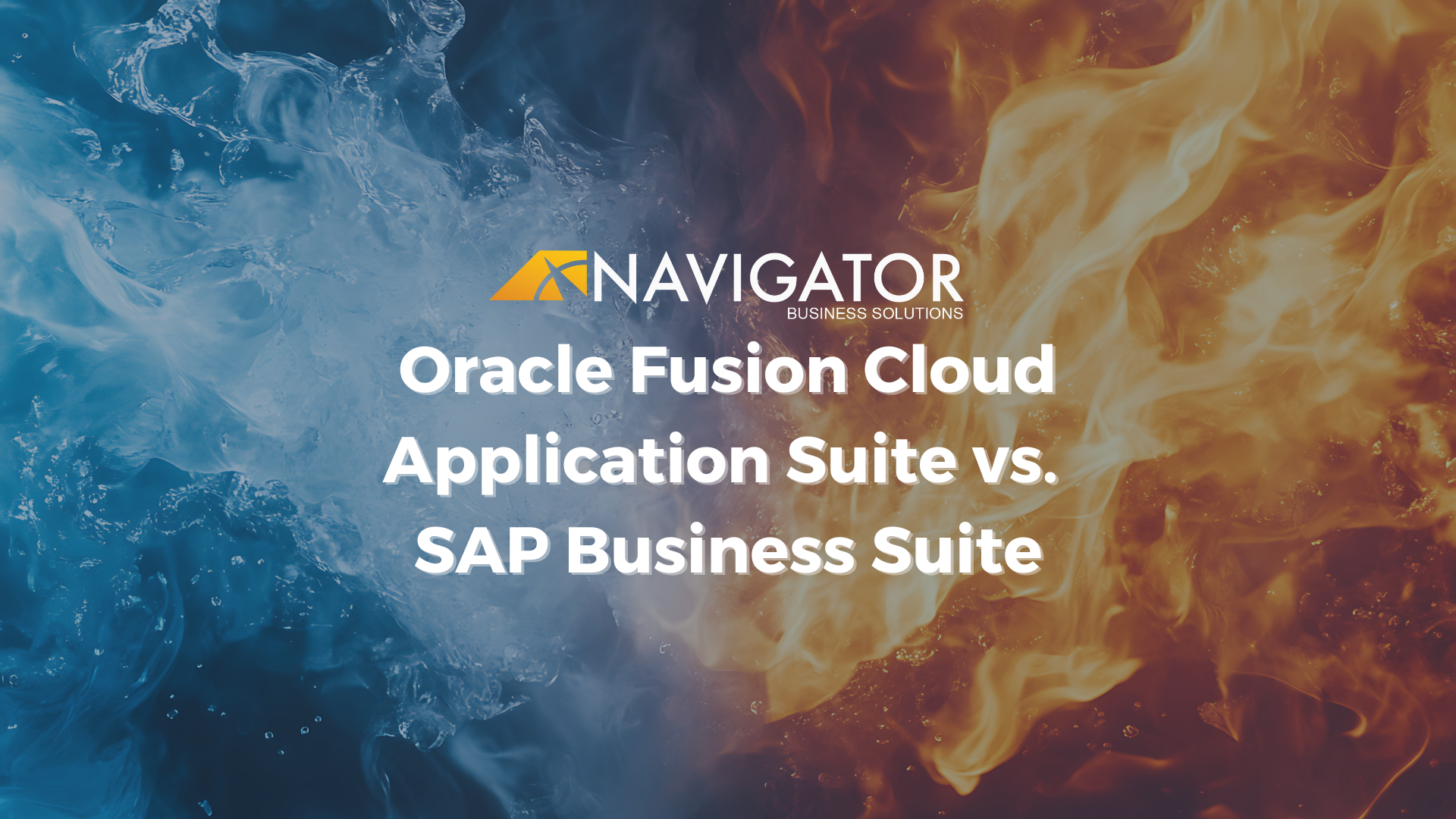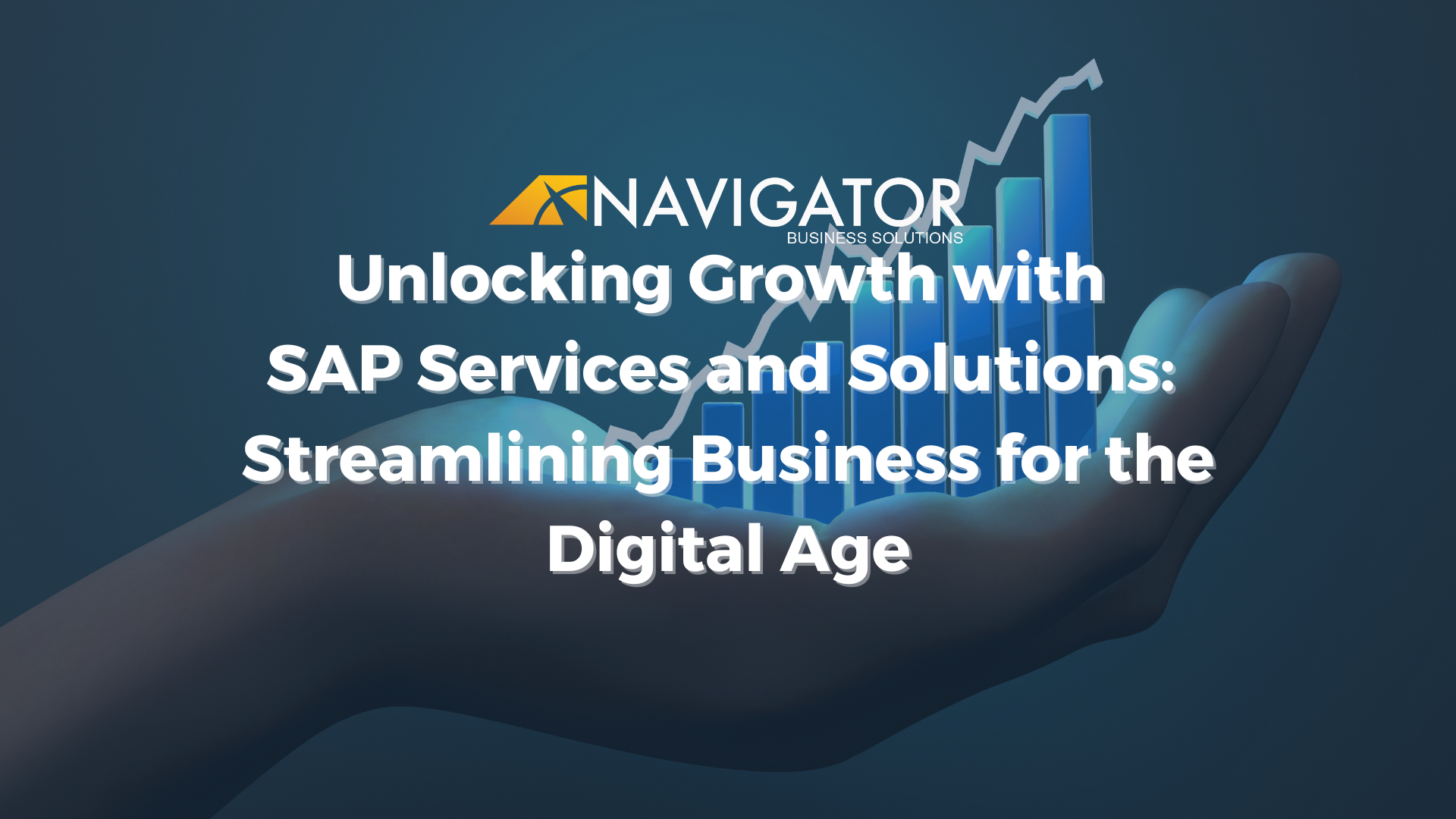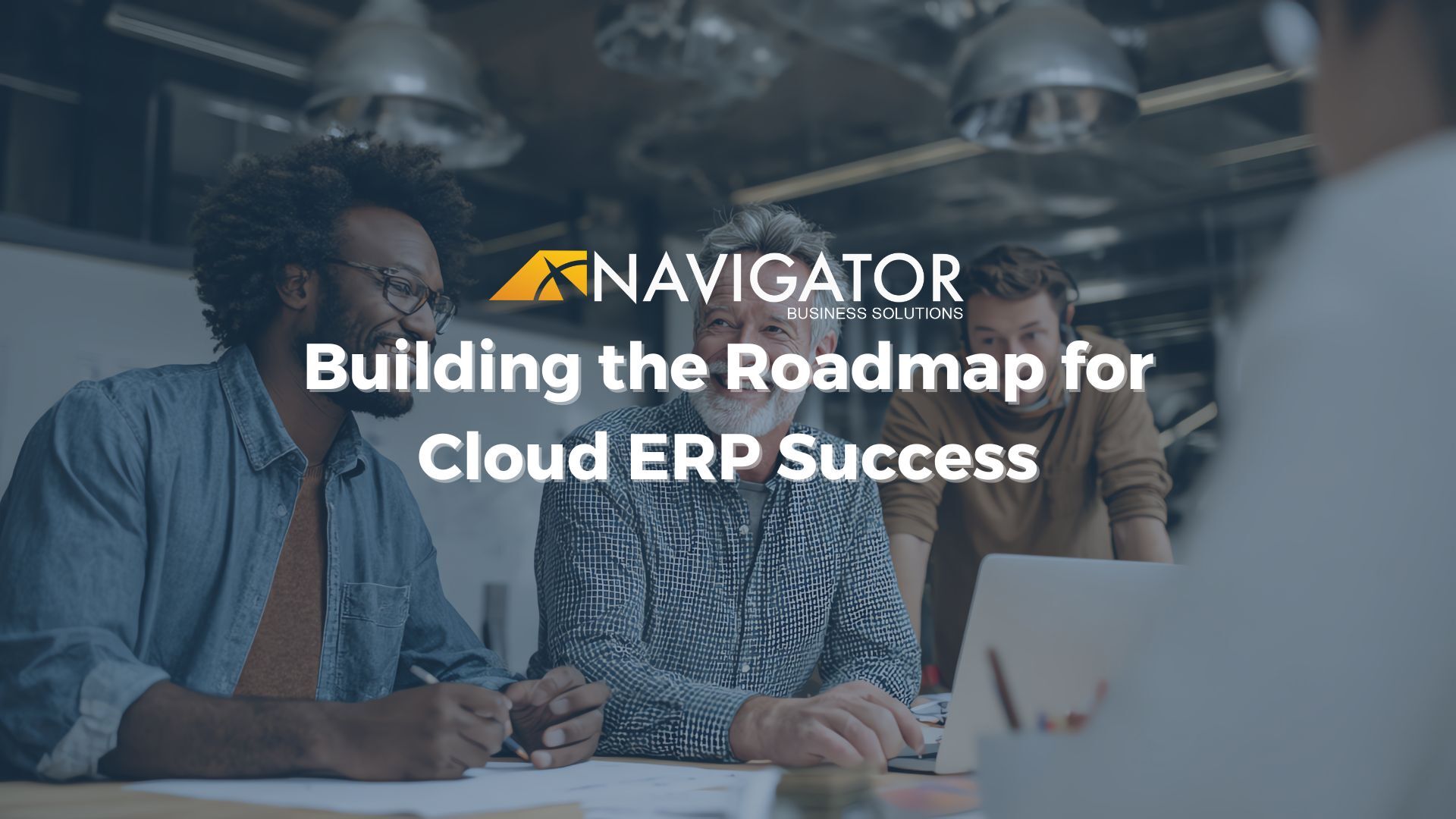Since on-premise software is quickly going the way of the passenger pigeon, part of your business is already in the cloud. It could be your online sales channel. Or your marketing platform. Or your CRM.
The problem is that your backend enterprise resource planning solution (ERP) still is not in the cloud. This is a problem not only because cloud-based software comes with many benefits beyond on-premise solutions, but also because ERP is the central nerve center for your business. Data needs to flow easily into your ERP solution and be accessible everywhere a customer or employee might engage with it. On-premise ERP just no longer meets the needs of modern business.
So let’s look at the various options for moving your ERP to the cloud, and what you’ll need for making that move.
But first, let’s briefly outline why your ERP system really should be in the cloud today instead of on-premise.
Why ERP Should Be in the Cloud
There are several strong reasons why cloud-based ERP makes sense.
- Greater Scalability. Web-based ERP is infinitely scalable. Businesses can pay for only what they need today, but also scale their backend infrastructure as they grow. Applications and infrastructure can be provisioned on an as-needed basis so an organization always has the ERP resources it needs.
- Reduced Maintenance Costs and Headaches. With cloud-based ERP, businesses no longer must purchase and support the hardware necessary to run their ERP solution. The ERP cloud provider handles upgrades, performance improvements, and hardware maintenance so a business can focus on more strategic activities instead.
- Tighter Security. Generally, businesses don’t worry about the security of Amazon Web Services or Google Cloud because cloud infrastructure providers build and maintain a tighter security posture than most businesses do internally. A cloud-based ERP almost always will have tighter, more robust security than on-premise ERP installations.
- Faster Innovation. Tech innovation is constantly evolving, and businesses that use cloud-based ERP are better placed to incorporate the latest innovations because these changes in the technology landscape are incorporated automatically at the cloud level instead of through periodic software upgrades further delayed by on-premise ERP limitations and the speed that upgrades can be rolled out by a company’s IT department. This matters in areas such as the growing role of artificial intelligence and machine learning in business operations.
- Improved Connectivity. On-premise ERP simply can’t connect as easily or as completely with other systems as cloud-based ERP. When ERP is in the cloud, there can be a constant data flow between other software tools, supplier networks, and sales channels that just isn’t possible with on-premise ERP.
Types of Cloud ERP Migration
There are three main approaches for moving your on-premise ERP to the cloud. The easiest is starting fresh by purchasing a cloud-based ERP solution and migrating your company’s processes and data to cloud ERP. But that isn’t the only option.
Option 1: Lift and Shift Cloud Migration
The simplest and most basic form of migration to the cloud is literally moving an on-premise ERP to a private cloud environment. This consists of takes the servers, applications and data from your existing on-premise ERP solution and parking on a cloud server.
The upside of this approach is that it is relatively straightforward, and your business can make the migration relatively quickly. The downside is that this isn’t really cloud-based ERP, it is on-premise ERP relocated to the cloud. So this type of cloud migration doesn’t benefit from most of the advantages of cloud-based ERP.
Option 2: Application Refactoring in ERP
With application refactoring, your business adapts your existing ERP software through custom code so it can take advantage of cloud hosting features and connectivity.
This is the most time-consuming way to migrate your ERP to the cloud, however, and it both makes your ERP solution brittle and foregoes many of the benefits of cloud-based ERP. Application refactoring only makes sense for larger enterprises with considerable investments in on-premise ERP, and we don’t recommend this type of migration for small to medium-sized businesses.
Option 3: Purchasing a New Cloud-Based ERP
The easiest and most complete way to get your ERP in the cloud is by migrating to a cloud-based ERP solution. Instead of making an on-premise ERP work with the cloud, your business moves to a cloud-native ERP solution that is built from the ground up to support your business in the cloud now and as you grow.
There are some great, full-featured, affordable cloud-based ERP solutions on the market today including SAP Business ByDesign for small to mid-sized businesses and SAP S/4HANA Cloud Public Edition for medium to large-sized enterprises. These cloud-based ERP solutions enable your business to modernize around the latest ERP technologies and take advantage of future innovations as the technology landscape evolves.
Solutions such as S/4HANA Cloud Public Edition also allow your business to turn on or off functionality as your business grows, and take advantage of third-party plugins on the SAP Business Technology Platform for greater agility without the need for custom code.
Moving to a new, cloud-based ERP solution does require migrating data and processes to a new system, but solutions such as Business ByDesign and S/4HANA Cloud come with templates, best practice workflows, and acceleration services for a rollout that can take as little as 4 to 6 weeks. Implementing a cloud-based ERP is not the headache you probably experienced when initially rolling out your on-premise ERP years ago.
Designing Your Cloud Migration Strategy
Moving your ERP to the cloud requires a clear roadmap and strategy so the project doesn’t get dragged down by delays, surprises, or extra costs.
There are seven steps that your business should take when migrating your ERP to the cloud.
1. Make a Cloud Migration Plan
As with any ERP migration, start by determining why your business is moving its ERP to the cloud, what data will be moved, the processes and functionality that your cloud-based ERP solution should possess, and how the move will be performed.
The answer to these questions will govern the entire process and help your business prepare an orderly migration.
2. Select a Cloud ERP Service Provider
Assuming your business decided on moving to a new cloud-based ERP, the next step is reviewing the cloud ERP solutions on the market and selecting the chosen platform.
Often a company’s shortlist will include SAP, Oracle and Netsuite, although there also are niche ERP solution providers. We advise most businesses to stick with one of the major ERP providers since scale and vendor stability are important for a backend system that will be with your business for many years to come.
Pay attention to the provider’s customer base, level of expertise, security and compliance controls, customer support channels, financial stability, and the expected migration costs.
As part of the selection process, look for cloud ERP solutions that make the migration process easier, programs such as GROW with SAP that come with all your business will need for the jump to cloud-based ERP.
It also is important that there is a healthy support community around the cloud ERP solution you select, and plenty of third-party add-on options and integrations that will make your cloud ERP robust and agile as your company grows and technology evolves.
3. Reserve Internal Resources for Migration
ERP migration, whether moving to a new solution or lifting and shifting your ERP to the cloud, will require an internal team for the project and a clear team lead.
This move to the cloud likely will take considerable time, even if a relatively turnkey solution is selected. So make sure your business allocates enough internal resources for the project so employees are not overburdened during the project.
As part of this, you’ll also want to make sure that the ERP migration does not impact the ongoing operations within your business. If there is a busy sales season ahead or milestones in your company’s growth journey planned for the near future, consider lengthening the rollout timeline so it does not impact current operations or divert key employees during a busy season.
4. Establish KPIs for the Migration and the New System
Set clear key performance indicators (KPIs) both for the cloud ERP migration process and for system performance after migration.
With clear KPIs for the migration process, your business can accurately track migration progress and quickly spot any slowdowns or project creep during rollout. Migration KPIs keep ERP projects on time and on budget.
Your business also should define KPIs for the new cloud-based ERP for verification that performance improvements on the new system actually are realized. Additionally, new system KPIs also help ensure that the new system is configured properly and meets current business needs.
5. Execute the Cloud Migration
Once a migration plan is in place, and both internal resources have been allocated and a cloud ERP solution has been chosen, it then is time to actually migrate your business to the new cloud solution.
A best practices approach is a phased migration that slowly moves data and applications over to the new solution piece by piece. Start with a small set of data and applications as a test, then slowly work through the rest of the business until everything has been successfully moved. After each application or data set has been moved, test it before moving on to the next part of the migration.
Be prepared for adjustments along the way, as there usually will be a few unanticipated issues or configurations that were not considered during the planning phase.
6. Post-Migration Monitoring and Adjustment
Once the migration is complete and the new cloud ERP solution is running smoothly in a production environment, keep monitoring the new system and KPIs closely for real-world performance and workflow hiccups that may only show up in a go-live environment.
With the help of the cloud ERP vendor and a support services partner such as Navigator Business Solutions, processes, and configurations will be adjusted and fine-tuned during post-migration until the cloud ERP performs as desired.
7. Perform Maintenance Checks and Train Employees on the System
One of the hardest parts of any system migration has nothing to do with the actual system itself: employee onboarding. A cloud ERP will bring new functionality and efficiencies, and most likely it will require employee change management as employees learn these new processes and how to navigate the system.
Once the migration to a new cloud ERP is complete, make sure there is adequate time and resources for properly onboarding employees and helping them with the new system. As part of this, an ongoing system training program should be put in place and not just a one-off tutorial for using the system.
After the migration, your business also should institute a routine of regular maintenance checks to ensure that the ERP system remains healthy. Cloud ERP reduces the maintenance tasks associated with ERP, but it doesn’t eliminate them completely.
Get Help with Your Cloud ERP Migration
As an SAP Gold Partner with 300+ ERP implementations under our belt and an early advocate for the advantages of cloud-based ERP, we know what it takes to move your backend to the cloud.
We love talking shop. For more information on the jump to the cloud, or how we can help with the process, call one of our experienced ERP consultants at (801) 642-0123 or by writing us at info@nbs-us.com.




